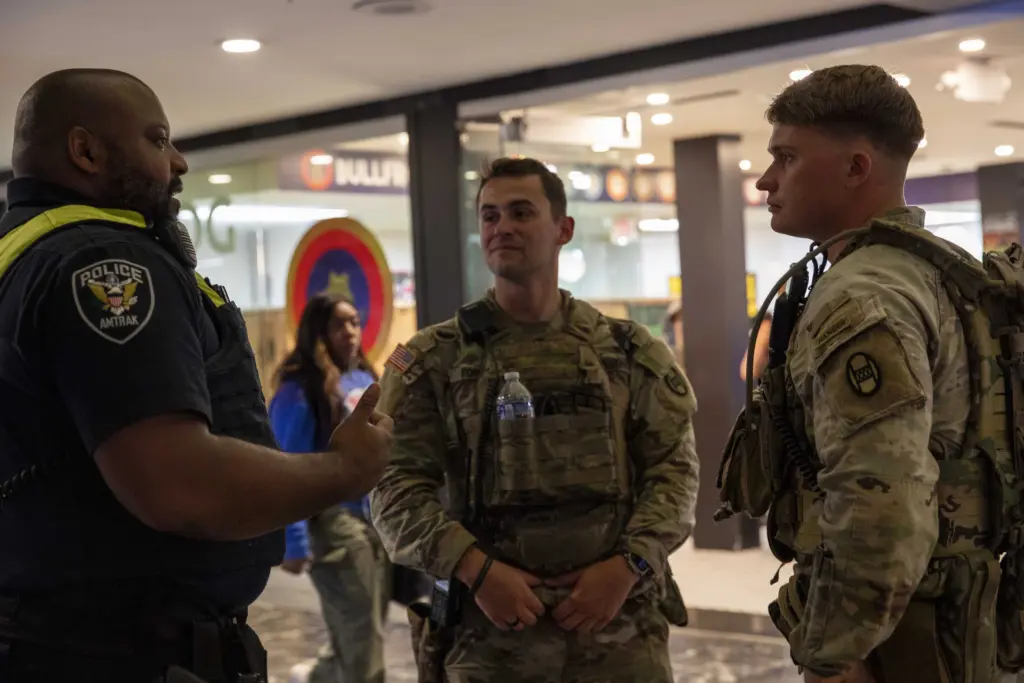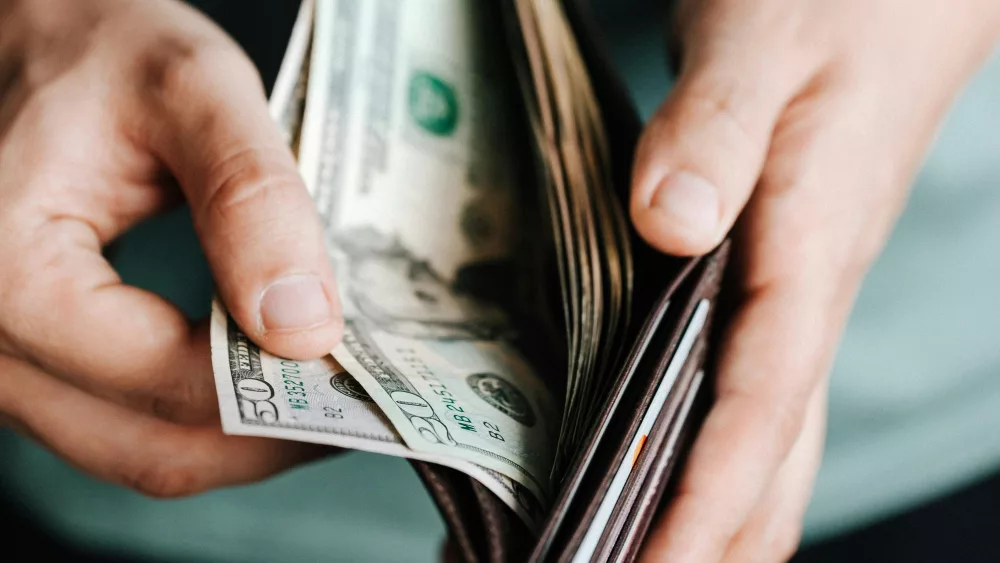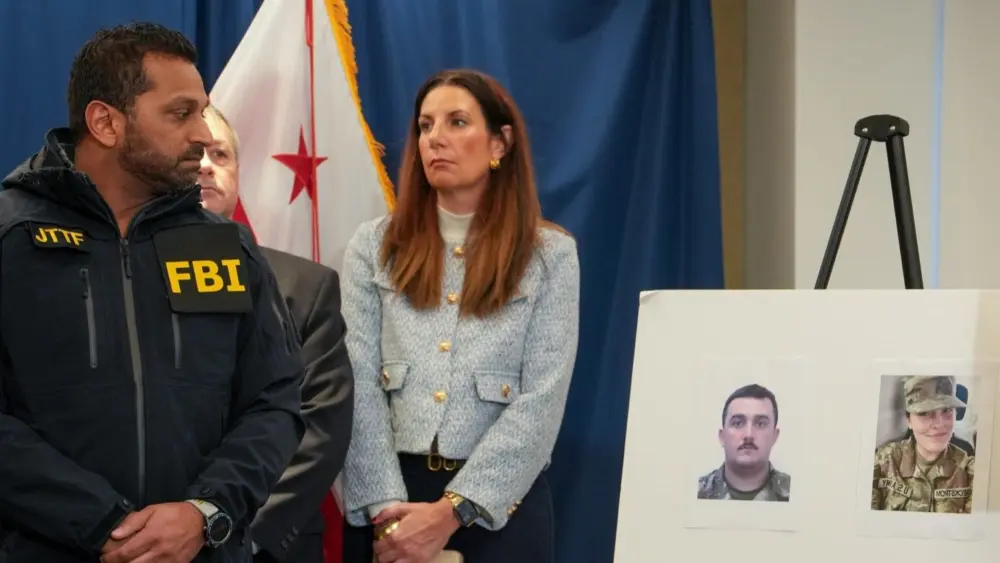WASHINGTON, D.C. — Officials have already cleared dozens of homeless encampments in the District of Columbia in recent days as President Donald Trump’s federal takeover of the nation’s capital for a “crime emergency” at the same time takes aim at people without housing.
Advocates working to end homelessness within the district and across the country raised alarm to States Newsroom over these removals and their impact on people without housing and the providers trying to serve them. The drive to push out homeless people came after Trump in July signed an executive order that attempts to overhaul federal policy on homelessness, declaring: “Endemic vagrancy, disorderly behavior, sudden confrontations, and violent attacks have made our cities unsafe.”
Multi-agency teams had eliminated 48 encampments in the District of Columbia as of Tuesday, White House press secretary Karoline Leavitt said at a briefing.
Metropolitan Police Department patrol units “are actively working with city officials to locate and clear additional encampments and remove homeless residents off of Washington’s streets,” she said.
Leavitt told reporters days prior that homeless people in the city would be “given the option to leave their encampment, to be taken to a homeless shelter, to be offered addiction or mental health services,” and would be “susceptible” to fines or jail time if they refused.
A day before Trump declared his “crime emergency” in Washington, D.C., on Aug. 11, the president wrote on social media that homeless people must move out “IMMEDIATELY.”
“We will give you places to stay, but FAR from the Capital,” he wrote.
Days later, bulldozers and garbage trucks were at work dismantling campsites.
According to WTOP News last week, leaders in the surrounding area of Montgomery County, Maryland, were preparing for a potential rise of homeless people in the county as a result of the president’s crackdown.
An annual point-in-time count released in May from the Metropolitan Washington Council of Governments saw 5,138 people experiencing homelessness in the district on one night in 2025 — a 9% decrease compared to 2024.
Homeless people’s belongings tossed
Jesse Rabinowitz, campaign and communications director at the National Homelessness Law Center, said “things seem so fluid and so chaotic that it’s hard to get an accurate representation” of where Trump’s campaign to get homeless people out of sight stands.
Rabinowitz said last week he witnessed the tossing of people’s belongings and the evictions of people experiencing homelessness, noting that “it was fast, it was chaotic, it was expensive, and it didn’t help anybody.”
“We know that clearing encampments makes it harder for people to get into housing,” he added. “People’s IDs that they need to get into housing are destroyed, people’s medications that they need to stay healthy are thrown away, people’s bikes that they need to get to work are often trashed.”
Ann Oliva, CEO of the National Alliance to End Homelessness, said the practice and policy of fining, ticketing and arresting people rather than creating housing and services for them is “devastating” — both to people experiencing homelessness and the providers who serve them.
Oliva said outreach workers can lose track of people that they’ve been working with for a long time, destroying trust between the two.
“That’s some of what I’ve seen over the last week here — as providers are trying to keep people as safe as possible, it’s getting harder to track them down to make sure that they can provide the services that are necessary for folks.”
Street outreach teams at work
Lara Pukatch, chief advocacy officer at Miriam’s Kitchen, said the organization, which works to end chronic homelessness in Washington, D.C., is “deeply concerned about what’s happening.”
Pukatch said the group’s street outreach teams “have really been working almost around the clock to address what’s going on,” including sharing information with people living outside when they hear about threats of encampment evictions to make sure they know what’s happening and the options they have.
“This also involves working nights, working weekends, connecting people to the life-saving supplies and supports that they’ve always needed, but in addition, really working hard with people to make sure that they’re safe and that they are not going to be further harmed or traumatized by what’s happening in the city.”
July executive order
Trump’s federal takeover in Washington, D.C., and the encampment clearings build off of the sweeping July executive order he signed.
The order says it aims to end federal support for “Housing First” policies that “deprioritize accountability and fail to promote treatment, recovery, and self-sufficiency.” The “Housing First” model focuses on providing immediate housing, with services offered afterward.
The order also calls on Housing and Urban Development Secretary Scott Turner to ensure that programs receiving federal housing and homelessness assistance require people with “substance use disorder or serious mental illness” obtain treatment or mental health services in order to participate.
Part of the order also encourages involuntary civil commitment expansion, where individuals with mental health conditions are placed into treatment facilities against their wishes.
Administration officials who say they are fighting crime in the district have also emphasized actions of homeless people. Vice President JD Vance, talking to National Guard troops at Union Station on Wednesday with Defense Secretary Pete Hegseth, said when he visited the transit center with his children two years ago, they were “screamed at by violent vagrants and it was scaring the hell out of my kids.”
Now, he said, “DC is already safer than it was nine days ago. We’re going to make it safer still to come. This is your city. You should feel free to come and visit here, have a meal, see all these incredible monuments, and actually enjoy yourself.”
Supreme Court decision
Oliva, of the National Alliance to End Homelessness, noted that while the events of the past week are “certainly alarming,” they mark a broader trend that has gained steam, beginning with the 2024 Supreme Court decision that allowed cities to punish homeless people for sleeping outdoors, even where there is no shelter available to them.
“What we’ve seen since President Trump came into office is a series of policies put in place — or attempted to put in place — through executive orders that really don’t do anything to address the root causes of homelessness because we know that homelessness itself is not actually a criminal issue, it’s an economic issue,” she said.
Though the president’s federal takeover has a 30-day limit, Trump wants an extension, leading to questions about how long these actions will continue.
Washington State Standard is part of States Newsroom, a nonprofit news network supported by grants and a coalition of donors as a 501c(3) public charity. Washington State Standard maintains editorial independence. Contact Editor Bill Lucia for questions: info@washingtonstatestandard.com.




